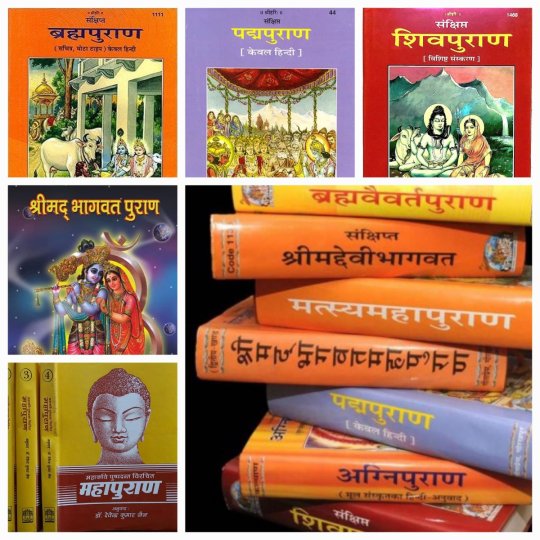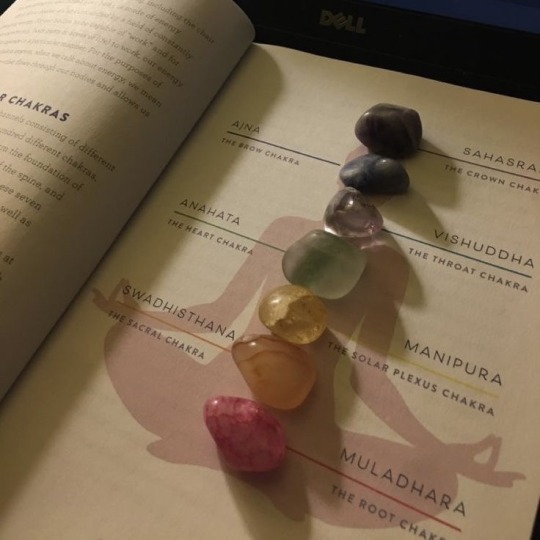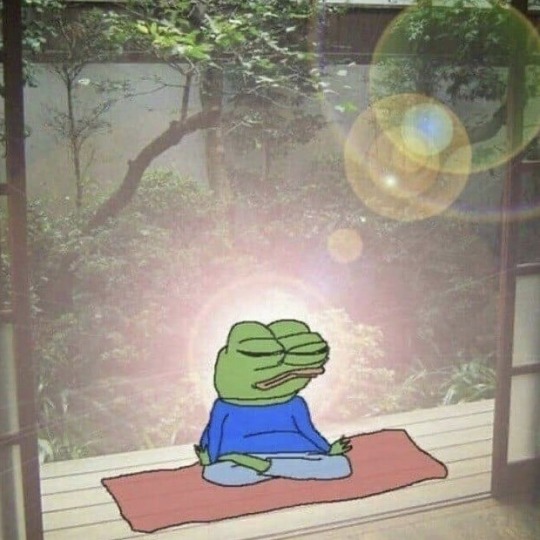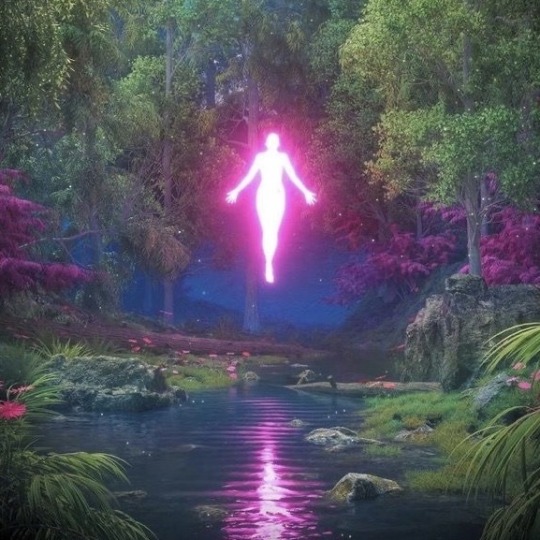#ancient hindu scriptures
Explore tagged Tumblr posts
Text
Time calculation in The Ling Mahapuran
Old Indian scriptures and literature are little explored. Majority of the people who follow Hinduism barely get in to the depth of it. Apart from religious values, it contains very rich information which help up to get an idea about the advancement of the civilization back then. If you open up any of the book and start reading, at the first glance it would appear a religious text. As you continue…
#ancient hindu scriptures#Ancient Knowledge System#Brahma#Exploring Hindu Puranas#Gurukul Education System#Hindu Cosmology#Hindu Science and Astronomy#Hindu Scriptural Insights#Hindu Time Calculation#Hindusim#Indian Literature#Indian Religious Texts#Indian Scriptures#Indus valley civilization#Puranas#Purans#Sacred Hindu Texts#Spiritual Dimensions in Hinduism#Spiritual Wisdom#The Ling Mahapuran#Time calculation in Hindusim#Vedas and Puranas#Vedic India#Vedic Knowledge of Time#Vedic Science#Vedic Teachings#Vedic times#Vishnu#Yuga
2 notes
·
View notes
Text

Ellora Caves
Shiva as Kala Bhairava with flaming eyes and in a state of frenzied excitement, with the Saptamatrika at his feet.
#ellora#ajanta ellora caves#UNESCO#UNESCO World Heritage Sites#Ellora Caves#Shiva#Kala Bhairava#Mahadev#Hinduism#Hindu#Ancient Bharat#Scriptures#Scripture#Carving#Statue#Ancient#Acient Hindu#Kailash Temple
88 notes
·
View notes
Text










Hampi: Birth place of lord Hanuman
#hampi#indiantemples#indian history#indian culture#indian#historical places#ancient history#abandoned places#raw photography#artists on tumblr#photooftheday#photography#photographers on tumblr#street photography#phone photography#google pixel#cultural heritage#monument#indian goddess#hinduism#hindu gods#temple#hindu temple#hindu scriptures#southindia
2 notes
·
View notes
Text

#This map is from 1914#woodblock print from Ashmolean Museum#University of Oxford about Kashi then it was called Benares.#This is A replica of Ancient map of Kashi and Banaras as per the Hindu Puranic scriptures. There are 108 Shiva temples in this map.#varanasi#map#vintage
2 notes
·
View notes
Text
Exploring the 18 Puranas in Hindu Dharma: Mythology, Cosmology, and Moral Teachings
The Puranas are a collection of ancient texts that play a significant role in Hindu dharma, providing valuable insights into mythology, cosmology, genealogy, legends, and moral teachings. Composed in Sanskrit, the Puranas are divided into two categories: the Mahapuranas (major Puranas) and the Upapuranas (minor Puranas). In this comprehensive article, we will explore all 18 Puranas, shedding…

View On WordPress
#Ancient Texts#cosmology#Genealogy#Hindu Dharma#Hindu Scriptures#legends#Moral Teachings#mythology#Puranas
3 notes
·
View notes
Text
Vijñāna-bhairava-tantra
A translation of the Vijñāna-bhairava-tantra (complete but lacking commentary)©2017 by Christopher Wallis aka Hareesh Introductory verse (maṅgala-śloka):“Shiva is also known as ‘Bhairava’ because He brings about the [initial awakening that makes us] cry out in fear of remaining in the dreamstate (bhava-bhaya)—and due to that cry of longing he becomes manifest in the radiant domain of the heart,…

View On WordPress
#ANCIENT INDIA#DECODING HINDUISM#HINDU DHARMA#hindu scriptures#HINDUISM#HINDUISM SCRIPTURES#Lord Shiva#sanatan dharma#tantra#Vijñāna-bhairava-tantra
6 notes
·
View notes
Text
Did Ancient Texts Predict the Big Bang? Shocking Parallels in the Bhagavatam!
1. Introduction For centuries, humanity has looked to the skies in search of answers about the universe’s origin. Scientists gave us the Big Bang theory, while sages from ancient India offered cosmological insights in scriptures like the Bhagavatam. Could it be that these ancient Indian texts described the Big Bang long before science caught up? The idea may sound outrageous at first, but when…
#ancient predictions#ancient science#bhagavatam#big bang theory#cosmology in hinduism#creation of universe#Hindu mythology#indian scriptures#puranas and science#spiritual cosmology#timeless wisdom#vedas and physics#Vedic cosmology
0 notes
Text
Sanatan Hindu time calculation
कालगणनामित्रों आज मैं आपको मनुष्यों के समयसीमा और देवताओं के समयसीमा में अंतर बताने का प्रयास करूंगा। हालांकि इसका मेरे पास कोई शास्त्र प्रमाण नहीं है परन्तु शास्त्रों में वर्णित समय व हमारे द्वारा बोले गए संकल्प का आधार लेकर ही प्रयास किया है। घंटा मिनट वैज्ञानिक समय है, इसलिए मैं इसी से शुरुआत करूँगा। जैसा कि आप जानते हैं, 60 सेकेंड का 1 मिनिट, 60 मिनिट का 1 घंटा होता है दिन और रात्रि को 24…
#ANCIENT INDIA#BHARAT#god vishnu#HINDU SCRIPTURES#Hindu time calculation#HINDUISM#HISTORY OF INDIA#incredible india#time calculation
0 notes
Text
Ramayana No. 10: Narada: The Celestial Sage and Divine Messenger of the Ramayana
As I continue my journey through the Ramayana, I’ve chosen to explore this epic using multiple versions: the abridged Valmiki translation, the comprehensive Gita Press edition, and the detailed Debroy translation. This approach allows me to compare different interpretations and uncover nuances that might otherwise go unnoticed. For those interested in exploring these different versions, both the…

View On WordPress
#ancient scriptures#Bhakti#comparative religion#comparative study#Dharma#divine messenger#Divine Wisdom#epic literature#Gita Press#Hindu epics#Hindu mythology#Hindu sages#Hindu texts#Hindu tradition#Indian literature#Indian spirituality#Mythology#Narada#Narada Bhakti Sutra#Ramayana#religious studies#righteous living#Sacred texts#sages#spiritual growth#spiritual guide#Spiritual teachings#Valmiki#Vedic wisdom
0 notes
Text
Wisdom of Ancient Indian Education: The 8 Limbs of Yoga and Beyond
Since times before the antiquities, Indian education system has been very robust. One of the core objective was to shape the individual and the society with highest virtues. How an individual should be is mentioned in various scriptures like Ved, Puran, Upanishad and others. In present times, one may consider these texts as purely religious scriptures. It is a common belief of most of the people,…

View On WordPress
#Ancient Civilizations#ancient hindu scriptures#Ancient India#ancient indian science#Ancient Knowledge#Ancient Knowledge System#Ancient texts#cultural heritage#Culture#Exploring Hindu Puranas#Hindu civilization#Hindu Scriptural Insights#Hindusim#India&039;s heritage#Indian education system#Indian Religious Texts#Lost Indian Knowledge#qualityoflife#Rediscovering Indian culture#Sacred Hindu Texts#Spiritual Wisdom#Yam&Niyam#yoga#yogaphilosophy
0 notes
Text
श्री हनुमान चालीसा (Shree Hanuman Chalisa)
श्री हनुमान चालीसा लिरिक्स – हिंदी में दोहा श्री गुरु चरन सरोज रज, निज मन मुकुरु सुधारि। बरनऊँ रघुबर बिमल जसु, जो दायक फल चारि।।1।। बुद्धिहीन तनु जानिके, सुमिरौं पवन-कुमार। बल बुद्धि विद्या देहु मोहिं, हरहु कलेस विकार।।2।। चौपाई जय हनुमान ज्ञान गुण सागर। जय कपीस तिहुँ लोक उजागर।।1।। राम दूत अतुलित बलधामा। अंजनि-पुत्र पवनसुत नामा।।2।। महाबीर विक्रम बजरंगी। कुमति निवार सुमति के संगी।।3।। कंचन वरण…
#ancient scriptures#bhakti#chanting#devotional hymns#Hanuman Chalisa#Hanuman Chalisa meaning#Hindu devotional songs#Hindu prayers#hinduism#Indian culture#Lord Hanuman#Lord Rama#mantra#meditation#Ramayana#religious chants#religious texts#Sanskrit verses#spiritual benefits#spiritual growth#Tulsidas
1 note
·
View note
Text
Magh Ratha Saptami 2024: फरवरी के महीने में कब है रथ सप्तमी?जानिए तिथि और महत्वRatha Saptami 2024: माघ शुक्ल सप्तमी अर्थात रथ सप्तमी। इस साल रथ सप्तमी 16 फरवरी को मनाई जाएगी। यह दिन पूरी श्रद्धा से सूर्यनारायण की पूजा करने और उनके प्रति कृतज्ञता व्यक्त करने का दिन है।
#Surya dev puja method#surya dev#surya dev puja vidhi#surya arghya benefits#surya dev puja niyam#mythological story#hindu scriptures#ancient india#mahabharat#mahabharat yuddha#Dharm News in Hindi#Dharm Hindi News
0 notes
Text

“Most energy moves through space in a spiral form—a ubiquitous motif in the macrocosmic and microscopic architecture of the universe. Beginning with galactic nebulae—the cosmic birth-cradle of all matter—energy flows in coiled or circular or vortex-like patterns. The theme is repeated in the orbital dance of electrons around their atomic nucleus, and (as cited in Hindu scriptures of ancient origin) of planets and suns and stellar systems spinning through space around a grand center of the universe. Many galaxies are spiral-shaped; and countless other phenomena in nature—plants, animals, the winds and storms—similarly evidence the invisible whorls of energy underlying their shape and structure.” ― Paramahansa Yogananda
201 notes
·
View notes
Text
𝐞𝐯𝐞𝐫𝐲𝐭𝐡𝐢𝐧𝐠 𝐲𝐨𝐮 𝐧𝐞𝐞𝐝 𝐭𝐨 𝐤𝐧𝐨𝐰 𝐚𝐛𝐨𝐮𝐭 𝐜𝐡𝐚𝐤𝐫𝐚𝐬



what even are chakras?
chakras (from the sanskrit word cakra, meaning “wheel” or “disc”) are spinning vortexes of subtle energy that exist within your pranic body (also called the “subtle body”). they’re not physical organs, but energetic hubs where mind, body, and spirit meet.
chakras were described as energy centers (padmas, or “lotuses”) that store prana: life force, within the subtle body, which is different from the physical body.
this subtle body is composed of nadis (energy channels), koshas (layers of consciousness), and chakras (energy hubs).
the original chakra texts were written in sanskrit, and the most detailed source comes from the shat-chakra-nirupana, a 16th-century tantric text that laid out the seven main chakras and their symbolic, spiritual, and physiological associations.
they influence your thoughts, emotions, physical health, spiritual growth, relationships, and even your damn bank account.
when your chakras are healthy and flowing freely, your whole life aligns like sacred geometry. when they’re blocked or chaotic? expect spiritual lag, emotional glitches, physical illness, and endless chaos.
important to note:
in the original tantric system, chakras weren’t “self-care tools” they were maps to divine awakening used during intense yogic, meditative, and kundalini practices to transcend ego, illusion, and reincarnation. it was liberation tech, not lifestyle inspo.
but now, in this modern age of energy work, psychology, and soul evolution, the chakra system has become a universal template applicable to everyone, not just yogis. and we’re gonna fuse that original wisdom with real psychology, real healing, and real magic.
origin of the chakra system
• earliest references to energy centers show up in the Vedas (ancient hindu scriptures) around 1500–1000 BCE.
• the shat-chakra-nirupana, a 16th-century tantric text, outlined the 7-chakra system most people know today.
• the system was never meant to be aesthetic it was part of a serious spiritual practice to activate kundalini shakti, the dormant divine feminine energy said to be coiled at the base of your spine.
originally, chakra work was about liberating the soul from illusion (maya) and achieving moksha (spiritual liberation). but in today’s world, chakra healing can help you:
• release trauma + emotional baggage
• align with your highest self
• create energetic flow in your career, love life, and creative path
• experience divine connection + psychic expansion
how do chakras work?
imagine 7 power stations wired along your spine. each one governs a certain aspect of your physical body, emotional world, mental patterns, and spiritual connection.
when they’re:
• balanced → energy flows freely = peace, joy, purpose, radiance
• blocked → stuck energy = fear, fatigue, illness, toxic patterns
• overactive → too much energy = burnout, anxiety, ego overdrive
• underactive → not enough energy = apathy, insecurity, numbness
your 7 main chakras
1. root chakra – muladhara
“i exist. i survive. i am grounded.”
• sanskrit: mula = root, adhara = support/foundation
• location: base of spine, pelvic floor
• element: earth
• color: red
• mantra: LAM
• gland: adrenal glands (fight-or-flight center)
• body link: spine, legs, bones, colon
• psych themes: survival, money, stability, belonging, family, safety
imbalanced symptoms:
• underactive: anxiety, disconnection, poverty mindset, fear of abandonment
• overactive: hoarding, controlling behavior, stubbornness, material obsession
• trauma imprints: childhood neglect, abandonment, physical abuse etc.
when balanced:
• you feel safe in your body and the world
• you can build structure and discipline with ease
• you attract abundance + grounded stability
• you trust life even when it’s hard
healing tools:
• grounding meditations
• red foods: beets, root vegetables, chili
• physical touch, body-based therapies (somatic work)
• walk barefoot, work with hematite, black tourmaline
• build routines + financial structure
• affirmation: “i am worthy of safety and abundance.”
2. sacral chakra – svadhisthana
“i feel. i create. i allow pleasure.”
• sanskrit: sva = self, adhisthana = dwelling place
• location: lower abdomen, 2 inches below navel
• element: water
• color: orange
• mantra: VAM
• gland: reproductive system
• body link: womb, bladder, hips, genitals
• psych themes: sensuality, emotions, creativity, pleasure, intimacy
imbalanced symptoms:
• underactive: numbness, shame, low libido, creative block, disconnection from body
• overactive: hypersexuality, addiction, obsession, drama
• trauma imprints: sexual abuse, body shame, religious guilt, heartbreak
when balanced:
• you radiate magnetism, sensuality, and artistic flow
• your emotions move freely without controlling you
• you’re tapped into your divine feminine and creative life force
• you allow yourself to feel pleasure without guilt
healing tools:
• sensual dance (belly dance, twerking, slow flow yoga)
• sacred baths with rose + orange oil
• creative practices (painting, singing, scripting)
• orange calcite, moonstone
• inner child + womb healing
• affirmation: “i honor my body. i deserve to feel good.”
3. solar plexus – manipura
“i act. i choose. i claim my power.”
• sanskrit: mani = jewel, pura = city → “city of jewels”
• location: stomach, between ribs and navel
• element: fire
• color: yellow
• mantra: RAM
• gland: pancreas + digestive system
• body link: liver, gallbladder, intestines
• psych themes: identity, ambition, boundaries, ego, self-discipline
imbalanced symptoms:
• underactive: low self-esteem, indecision, victim mentality
• overactive: arrogance, perfectionism, aggression, burnout
• trauma imprints: bullying, strict parenting, humiliation, failure shame
when balanced:
• you’re decisive, empowered, and assertive without arrogance
• you have strong boundaries and healthy self-esteem
• you feel motivated and energized to go after what you want
• you become a natural leader
healing tools:
• sunbathing, breath of fire, core exercises
• wear yellow, work with citrine or pyrite
• personal power rituals (write + burn limiting beliefs)
• practice saying “no”
• affirmation: “i am the author of my life. i am enough.”
4. heart chakra – anahata
“i love. i forgive. i connect.”
• sanskrit: anahata = unstruck, infinite sound
• location: center of chest
• element: air
• color: green / pink
• mantra: YAM
• gland: thymus (immune system)
• body link: lungs, heart, arms, hands
• psych themes: compassion, forgiveness, empathy, romantic love, grief
imbalanced symptoms:
• underactive: isolation, coldness, fear of intimacy, bitterness
• overactive: martyrdom, people-pleasing, jealousy, attachment
• trauma imprints: loss, betrayal, rejection, emotional neglect
when balanced:
• you feel deep connection to others and to life itself
• you radiate unconditional love without losing yourself
• your immune system strengthens (yes, real science backs this)
• you can forgive, grieve, and love again
healing tools:
• breathwork (especially heart coherence)
• ho’oponopono (forgiveness prayer)
• emerald, rose quartz
• write love letters to self
• self-compassion meditations
• affirmation: “i am love. i radiate unconditional compassion.”
5. throat chakra – vishuddha
“i speak. i express. i tell the truth.”
• sanskrit: vishuddha = purification
• location: throat and neck
• element: ether (space)
• color: sky blue
• mantra: HAM
• gland: thyroid
• body link: vocal cords, mouth, jaw, ears
• psych themes: communication, truth, expression, listening
imbalanced symptoms:
• underactive: fear of speaking, introversion, repression
• overactive: gossip, interrupting, dominating convos
• trauma imprints: being silenced, punished for truth, gaslighting
when balanced:
• you speak with clarity, confidence, and integrity
• your voice becomes a tool for healing and influence
• you can express yourself artistically and emotionally
• you’re deeply heard by others
healing tools:
• chanting, singing, vocal toning
• write + speak affirmations out loud
• journal your truth
• use lapis lazuli, blue lace agate
• affirmation: “my voice matters. i speak my truth with grace.”
6. third eye – ajna
“i see. i know. i trust my inner wisdom.”
• sanskrit: ajna = to perceive, to command
• location: forehead, between eyebrows
• element: light
• color: indigo
• mantra: OM
• gland: pineal gland (melatonin, circadian rhythms)
• body link: brain, eyes, sinuses
• psych themes: intuition, imagination, perception, clarity
imbalanced symptoms:
• underactive: confusion, over-intellectualizing, lack of faith
• overactive: paranoia, delusion, dissociation
• trauma imprints: disillusionment, spiritual rejection, fear of intuition
when balanced:
• you trust your intuition without needing external validation
• you see life symbolically, not just literally
• dreams become vivid and prophetic
• you develop inner wisdom + spiritual intelligence
healing tools:
• meditation (especially vipassana + visualization)
• dream journaling
• limit screen time
• work with amethyst or labradorite
• third eye massage
• affirmation: “i see clearly. i trust my soul’s vision.”
7. crown chakra – sahasrara
“i transcend. i merge. i remember who i truly am.”
• sanskrit: sahasrara = thousand-petaled
• location: top of the head
• element: pure consciousness
• color: violet / white
• mantra: OM
• gland: pineal + pituitary
• body link: brain, nervous system
• psych themes: spirituality, divine connection, oneness, transcendence
imbalanced symptoms:
• underactive: atheism, existential dread, lack of purpose
• overactive: spiritual bypassing, superiority complex
• trauma imprints: spiritual rejection, religious abuse, nihilism
when balanced:
• you experience oneness with the universe
• you tap into divine downloads, flow states, soul alignment
• you feel limitless, guided, and expansive
• you recognise yourself as a vessel for higher love + wisdom
healing tools:
• meditation in silence
• crown chakra mudras + breathwork
• read sacred texts / study universal wisdom
• selenite, clear quartz
• fast or detox occasionally
• affirmation: “i am one with the divine. i am infinite consciousness in form.”
how to activate, align, and master your chakras daily
• do chakra meditation
• listen to solfeggio frequencies for specific chakras
• wear color-coded outfits / makeup to amplify each chakra
• eat chakra-aligned foods for lunch + dinner
• pull tarot spreads for each chakra to check your energy
• speak chakra mantras out loud in order to harmonize your field
• visualize golden energy spiraling from root to crown every night
#girlblogging#dream life#empowerment#levelling up#manifestation#manifesting#love#aesthetic#gaslight gatekeep girlboss#chakras#meditation#spirituality#spiritual awakening#girlboss fr#just girlboss things#becoming that girl#that girl#queen#it girl#positivity#positive thoughts#dream lifestyle#manifest your dreams#female manipulator#devine feminine#im just a girl#level up#witchblr#witch community#witchcraft
69 notes
·
View notes
Text
Upanishad in brief
What is Upanishad (1) Upanishad is the essence of Vedas. Abstract i.e. squeeze or brief. Upanishad is the basis of Indian spiritual contemplation, the source of Indian spiritual philosophy. God or not, soul or not, how is the universe etc all serious, philosophy, yoga, meditation, samadhi, salvation etc will be found in Upanishad. Every Hindu should read the Upanishad. Reading these gives true…
#ANCIENT INDIA#BHAGVAT PURAN#BHAGVATGITA#BHARAT#DECODING HINDUISM#GITA#hindu scriptures#HINDUISM#HINDUISM AND COSMOLOGY#HINDUISM SCRIPTURES#HISTORY OF INDIA#HISTORY OF INDIA/BHARAT#Lord Vishnu#RIGVED#sanatan dharma#SCIENCE AND VEDAS#SRIMAD-BHAGVAT PURAN#UPNISHAD#VEDAS#vedic cosmology#VEDIC MATHMATICS#Vedic science
0 notes
Text
Writing Notes: Mystical Items & Objects

Examples in Mythology and Literature
Pandora's Box
The god Prometheus stole fire from heaven to give to the human race, which originally consisted only of men
To punish humanity, the other gods created the first woman, the beautiful Pandora
As a gift, Zeus gave her a box, which she was told never to open
However, as soon as he was out of sight she took off the lid, and out swarmed all the troubles of the world, never to be recaptured
Only Hope was left in the box, stuck under the lid
Anything that looks ordinary but may produce unpredictable harmful results can thus be called a Pandora's box
Hermes' Winged Sandals
Also called the Talaria of Mercury
Are winged sandals, a symbol of the Greek messenger god Hermes (Mercury)
They were said to be made by the god Hephaestus of imperishable gold and they flew the god as swift as any bird
Cintamani Stone
Also referred to as the Chintamani
A wish-fulfilling stone that features across both Hindu and Buddhist religions
The stone features as one of many Mani Jewel (i.e., several gems that are mentioned prominently in Buddhist literature) images that can be found in the scripture of Buddhism
In Hinduism, the stone is connected to the gods Ganesha and Vishnu
Usually, it is depicted as a jewel in Vishnu’s possession known as the Kaustubha
The Kaustubha acts as a sign of divine authority
Arcane Artifacts & Objects
Offer a gateway between time past and time present, bringing layers of ancient history and new-world intrigue to a narrative
Such items are typically represented in fiction as works of long-lost knowledge, primordial features or landmarks, and curious objects of mysterious origin
Often lying dormant until the pivotal moment of discovery, these items invite characters and readers alike into a dance with the unknown
Examples: Necronomicon, Genie's Bottle
Necronomicon
Also referred to as the Book of the Dead
It appears in stories by H.P. Lovecraft
A dark grimoire (i.e., a magician's manual for invoking demons and the spirits of the dead) of forbidden knowledge
Used to open gateways of unearthly powers and cosmic horrors
Genie's Bottle
The classic magical item from mythology, also featured in Aladdin
A vessel of wish fulfillment that often leads to dramatic and unexpected consequences
Doorways & Portals
Doorways in fiction serve as gateways between worlds, dimensions, or states of reality, providing characters with universe-hopping capabilities and genre-defying journeys
These portals, whether physical structures or fantastical mechanisms, open up limitless storytelling possibilities, allowing for sudden shifts in setting and introducing elements of surprise and surrealism
Examples:
C.S. Lewis' wardrobe in The Chronicles of Narnia serves as a secret portal to a fantasy world, bridging the mundane with the fantastical
The eponymous board game in Jumanji transports its players into a wild and perilous jungle adventure, wrenching them from the safety of their living room
Jewelry, Gems, and Garments
Along with other various accessories, these serve several narrative functions, from symbolizing power and status to bestowing unique abilities upon their wearers
These items can act as plot catalysts (i.e. MacGuffins), embody character traits, or hold deep cultural or magical significance within a story’s world
Example: The Amulet of Mara in Skyrim not only reduces the cost of Restoration spells but also unlocks marriage options for the player, integrating gameplay with the narrative
Legendary Objects of Power
Carry with them stories of grandeur and lore, passed down through generations and intertwined with the fates of those who wield them
These are the objects that make or break worlds, bestow immense strength, and are frequently considered among the most powerful items in fiction
Example: Though it's never actually been seen, the Kusanagi Sword from Japanese folklore is a fabled sword that represents valor, said to be endowed with divine powers
Machinery and Technologies
Stretch the boundaries of physics and logic to offer a glimpse into what could be possible in alternate or future universes
These innovations, whether grounded in current science or verging on the fantastical, propel narratives forward and deepen the complexity of the story’s world
Writers can leverage these technological wonders to enhance their storytelling, using them to explore themes of power, ethics, and the human relationship with technology
Example: The body shields in Dune generate a protective forcefield around the wearer—advanced technology that current militaries can only dream of
Mundane Everyday Items
Possess extraordinary storytelling potential to transform the unassuming into the unforgettable
Seemingly ordinary, these objects can surprise both characters and readers, unveiling hidden depths and abilities when least expected
These seemingly mundane objects could fall into unsuspecting hands and create chaos or catalyze a hero’s journey
Additionally, they might only reveal their true nature to those worthy or capable of wielding their power, which can set the stage for narratives that are centered around discovery and mastery
Example: Oscar Wilde’s Portrait of Dorian Grey presents art as a vessel for dark magic, encapsulating the protagonist’s sins while he remains untouched by time
Sources: 1 2 3 4 ⚜ Writing Notes & References
#writing notes#fantasy#mythology#literature#greek mythology#writeblr#spilled ink#dark academia#writing reference#poets on tumblr#poetry#writers on tumblr#writing prompt#fiction#light academia#studyblr#booklr#creative writing#writing resources
155 notes
·
View notes